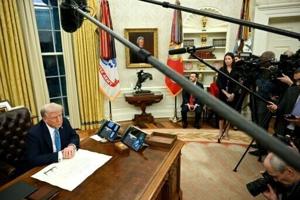Trade War Fallout: Trump Tariffs Set to Inflate Manufacturing Expenses by Billions

In a bold move that could reshape international trade dynamics, President Donald Trump has signed a controversial executive order imposing significant tariffs on imported goods from Canada, Mexico, and China. The sweeping trade measure introduces a 25% tax on imports from Canada and Mexico, while Chinese imports will face a 10% tariff.
The economic implications are substantial, with U.S. Senator Maria Cantwell (D-WA) highlighting that these tariffs could potentially increase manufacturing costs by an estimated $144 billion annually. The dramatic trade policy shift signals the administration's commitment to protecting domestic industries and challenging existing international trade agreements.
Senator Cantwell has been vocal in her critique of the tariffs, warning about the potential ripple effects on American businesses and consumers. The new trade restrictions are expected to spark intense debate about the long-term economic consequences of such protectionist measures.
As global markets react to this unexpected development, manufacturers, economists, and trade experts are closely monitoring the potential impact on international commerce and domestic production costs.

